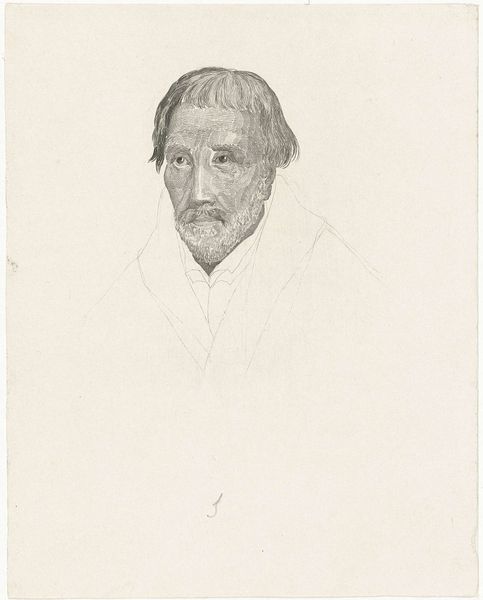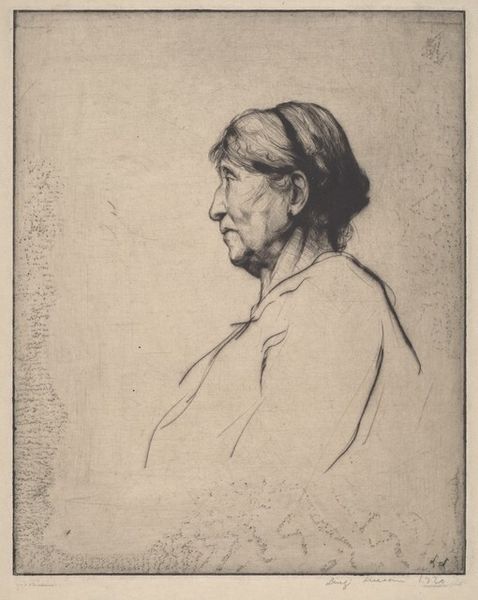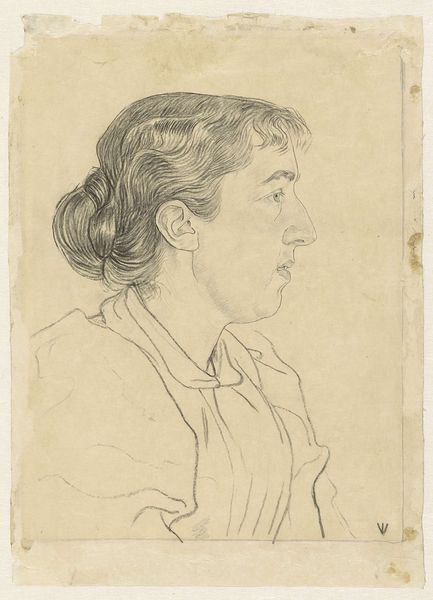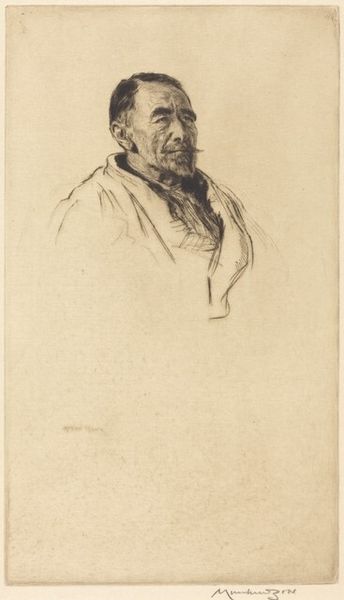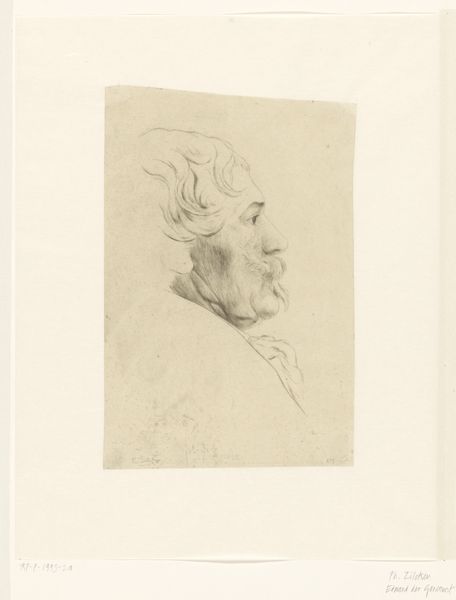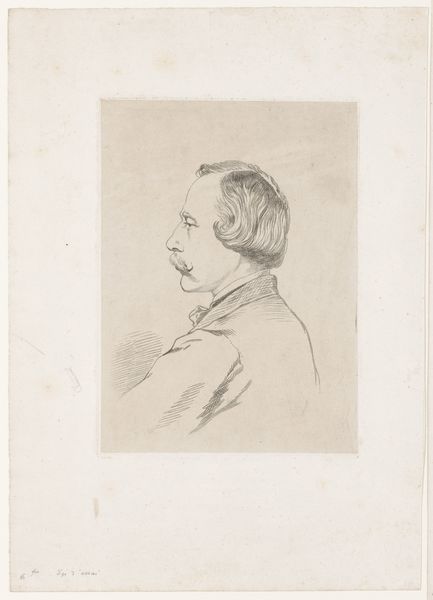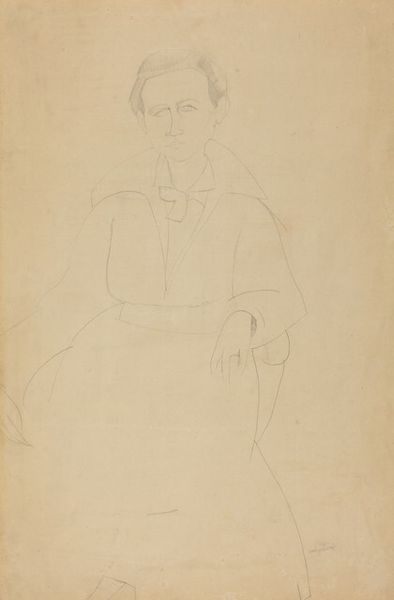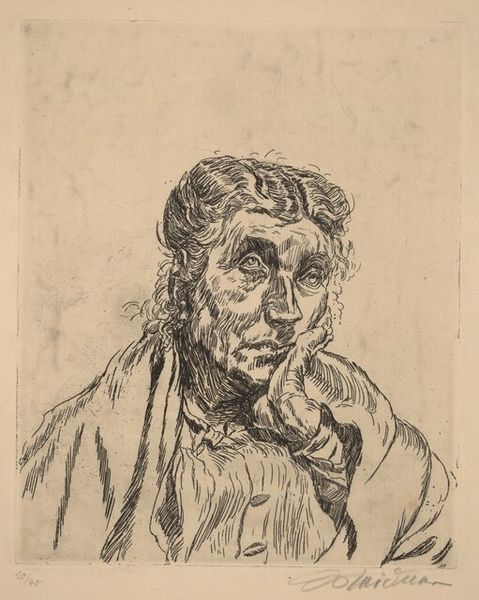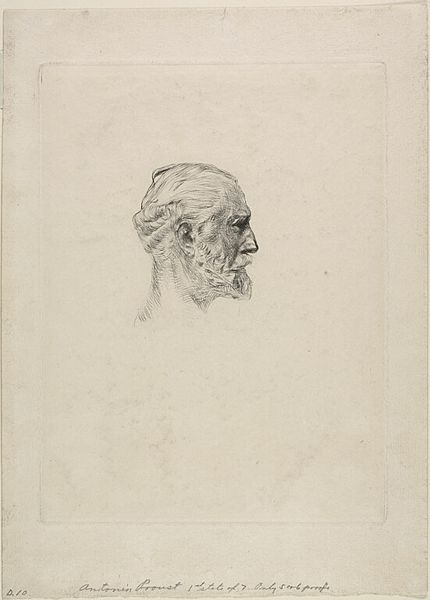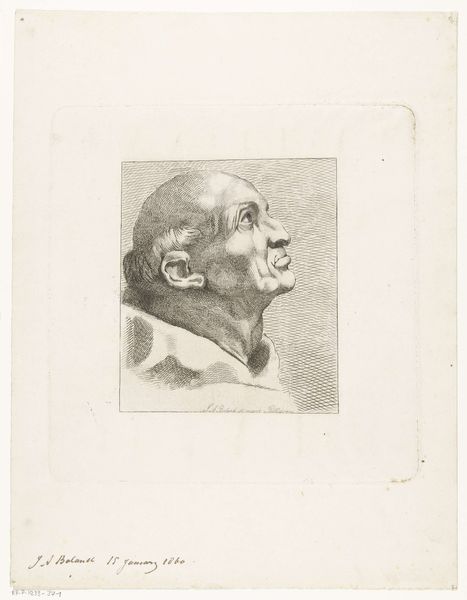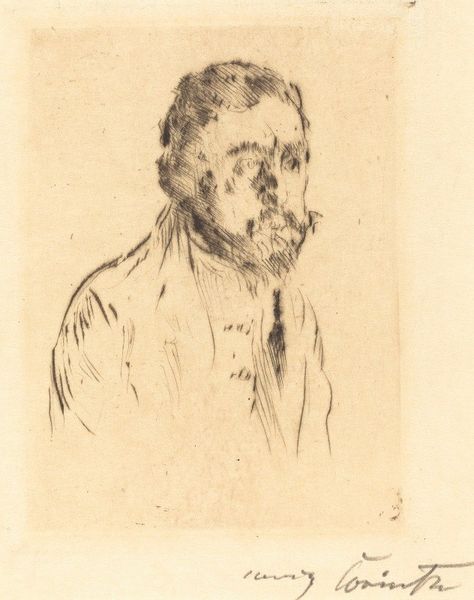
drawing, pencil
#
portrait
#
drawing
#
figuration
#
pencil drawing
#
pencil
#
academic-art
#
realism
Dimensions: height 440 mm, width 322 mm
Copyright: Rijks Museum: Open Domain
Editor: So, here we have a pencil drawing titled "Portret van de arts Herman Haakman," placing its creation sometime before 1840. It is now held at the Rijksmuseum, and was created by Henricus Wilhelmus Couwenberg. The figure's direct gaze and the precision of the pencil strokes give it an air of self-assuredness, even perhaps suggesting some sort of professional status. What do you make of it? Curator: This portrait presents us with an interesting intersection of power, representation, and social status in the pre-industrial era. It depicts a doctor, placing him in a position of authority and respect within the community. I'd like us to consider how class and profession are being signaled here through the conventions of portraiture at the time. How do you read his visual presentation through the lens of gender? Does it present ideals of masculinity? Editor: I hadn't considered the role of gender, but his confident posture and the formal composition could definitely point to accepted representations of masculinity at that time. The precision almost feels like it strives for accuracy, as if conveying scientific authority, if that makes sense? Curator: Absolutely, and it's crucial to remember the social context. Before 1840, medical knowledge was far less standardized. Doctors were figures of both authority and sometimes suspicion. What details can you point to that suggest his social standing and perhaps contribute to his aura of authority? Editor: The hint of the decorative chair, his neatly styled hair, and maybe that small detail that looks like an emblem or an award on his chest. But there's also a starkness to the drawing; a lack of elaborate background details. Is this an intentional simplification, perhaps reflecting a certain humility or dedication to his profession? Curator: That is an astute observation. It is precisely within those nuanced contradictions that we can delve deeper into the complex realities of identity. The artist presents us with signifiers of success and power while also maintaining a sense of groundedness, suggesting the artist’s awareness of broader socio-economic disparities. Editor: It's fascinating to think how a single drawing can reveal so much about the society it was created in. It prompts you to really look. Thanks for sharing your perspective.
Comments
No comments
Be the first to comment and join the conversation on the ultimate creative platform.
